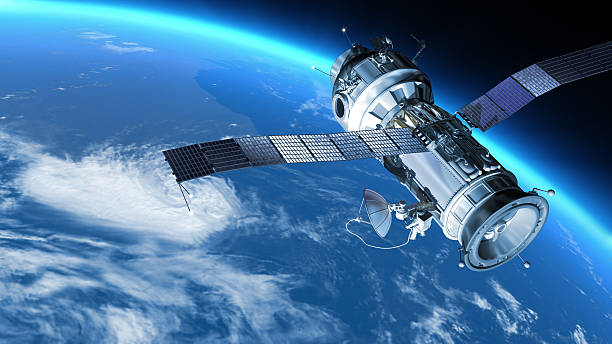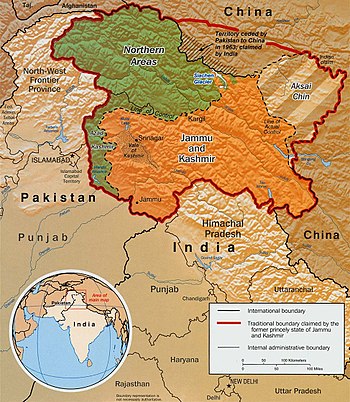The Indian Army's satellite capabilities, primarily managed through the Indian Space Research Organisation (ISRO) and the Defence Research and Development Organisation (DRDO), are advanced and have significantly bolstered India's military surveillance and intelligence-gathering capabilities. Below is an assessment of their satellite capabilities and their effectiveness in overseeing terrorist activities inside Pakistani territory, based on available information and strategic analysis.
Indian Army's Satellite Capabilities
1. Overview of Satellite Network:
- Current Fleet: India operates over 50 satellites, many of which serve dual civilian-military purposes. Approximately 13-15 satellites are dedicated to or have significant military applications, including reconnaissance, surveillance, and communication. (https://byjus.com/free-ias-prep/eyes-in-the-sky-military-satellite-rstv-in-depth/) (https://x.com/ETDefence/status/1101050534310674433)
- Key Satellites:
- Cartosat Series: High-resolution imaging satellites (e.g., Cartosat-2, Cartosat-3) provide sub-meter resolution (down to 0.25 meters for Cartosat-3), enabling detailed mapping and surveillance of terrain and infrastructure. (https://www.sciencedirect.com/science/article/abs/pii/S0265964617300929) (https://x.com/ETDefence/status/1101050534310674433)
- RISAT Series: Radar Imaging Satellites (e.g., RISAT-1, RISAT-2, EOS-09) use Synthetic Aperture Radar (SAR) for all-weather, day-night imaging. RISAT-2B, for instance, has a 0.5-meter resolution, capable of detecting objects under cover or in adverse conditions. (https://byjus.com/free-ias-prep/eyes-in-the-sky-military-satellite-rstv-in-depth/) (https://x.com/TheLegateIN/status/1721185943317877035)
- GSAT-7/7A: Dedicated military communication satellites for secure, real-time data transfer across the Indian armed forces, particularly the Navy and Air Force. (https://x.com/ETDefence/status/1101050534310674433)
- EMISAT: An electronic intelligence (ELINT) satellite launched in 2019 for the DRDO, designed to intercept and analyze electronic signals, enhancing situational awareness along borders. (https://byjus.com/free-ias-prep/eyes-in-the-sky-military-satellite-rstv-in-depth/)
- Coverage: Indian satellites can map approximately 770,000 square kilometers of Pakistan’s 880,000 square kilometers of land area with high-resolution imagery (0.65 meters or better), providing commanders with detailed intelligence.
2. Technological Advancements:
- All-Weather Capability: SAR-equipped satellites like RISAT-2 and EOS-09 ensure continuous monitoring regardless of weather or light conditions, critical for tracking dynamic activities such as troop movements or militant operations. (https://byjus.com/free-ias-prep/eyes-in-the-sky-military-satellite-rstv-in-depth/)
- Real-Time Intelligence: While current satellites provide near-real-time data, India is working toward real-time coverage with plans for a constellation of 52 surveillance satellites under the Space-Based Surveillance (SBS) Project Phase 3, costing $3 billion. This will include visual, SAR, and infrared imaging for 24/7 monitoring of Pakistan and parts of China. (https://x.com/TheLegateIN/status/1844597121368064474)
- Minisatellites and ASAT: The DRDO is developing minisatellites for communication, navigation, and GPS services, alongside anti-satellite (ASAT) capabilities like the Kinetic Energy ASAT (KE-ASAT) to counter hostile satellites. (https://www.sciencedirect.com/science/article/abs/pii/S0265964617300929)
3. Strategic Developments:
- Space-Based Surveillance Project: Approved by the Cabinet Committee on Security, this project aims to deploy a robust network of satellites for continuous border surveillance, significantly enhancing India’s ability to monitor adversarial activities. (https://x.com/TheLegateIN/status/1844597121368064474)
- Limitations: Despite advancements, India’s satellite network currently lacks full 24/7 real-time coverage over Pakistan due to orbital constraints and the number of satellites. This gap is being addressed through the SBS project. (https://www.sciencedirect.com/science/article/abs/pii/S0265964617300929) (https://x.com/grok/status/1919702397921984909)
Oversight of Terrorist Activity in Pakistani Territory
1. Effectiveness of Surveillance:
- Border and Cross-Border Monitoring: Indian satellites, particularly Cartosat and RISAT, are extensively used to monitor Pakistan’s military installations, missile launch sites, and border areas along the Line of Control (LoC). They have proven effective in tracking militant movements and infrastructure, such as training camps, in Pakistan-administered Kashmir and other regions. (https://www.sciencedirect.com/science/article/abs/pii/S0265964617300929) (https://byjus.com/free-ias-prep/eyes-in-the-sky-military-satellite-rstv-in-depth/)
- Specific Instances:
- In 2019, post-Balakot airstrikes, the Indian Air Force used satellite imagery from Cartosat and RISAT to assess damage to a Jaish-e-Mohammed (JeM) camp in Pakistan, demonstrating their utility in post-strike analysis. (https://byjus.com/free-ias-prep/eyes-in-the-sky-military-satellite-rstv-in-depth/)
- RISAT-2B was used to assess damage at Pakistan Air Force’s Mianwali base after an attack in 2023, highlighting its role in cross-border intelligence. (https://x.com/TheLegateIN/status/1721185943317877035)
- ELINT Capabilities: EMISAT and other signals intelligence (SIGINT) platforms allow India to intercept communications and electronic signals from militant groups and Pakistani military units, aiding in identifying terrorist networks and their backers. (https://byjus.com/free-ias-prep/eyes-in-the-sky-military-satellite-rstv-in-depth/)
2. Challenges in Oversight:
- Real-Time Gaps: While India’s satellites provide high-resolution imagery, the lack of continuous real-time coverage limits the ability to track fast-moving terrorist activities or respond instantaneously to emerging threats. (https://www.sciencedirect.com/science/article/abs/pii/S0265964617300929)
- Pakistan’s Countermeasures: Pakistan, with access to China’s military space capabilities (e.g., PRSS-1, PakTES-1A), has its own surveillance satellites, which it uses to monitor Indian activities. This creates a mutual surveillance dynamic, potentially allowing Pakistan to conceal or relocate terrorist infrastructure. (https://www.gatewayhouse.in/pak-satellites-india/) (https://x.com/grok/status/1919702397921984909)
- Dense Terrain and Urban Cover: Pakistan’s Federally Administered Tribal Areas (FATA) and urban centers pose challenges for satellite-based detection of small-scale terrorist activities, as militants often operate in concealed or densely populated areas. (https://ctc.westpoint.edu/the-pakistan-army-and-its-role-in-fata/)
3. Strategic Implications:
- Deterrence and Intelligence: India’s satellite capabilities contribute to its strategic deterrence by providing near-real-time intelligence on Pakistan’s military and terrorist activities. This has been critical in operations like the 2016 surgical strikes and 2019 Balakot airstrikes, where satellite data guided planning and execution. (https://www.sciencedirect.com/science/article/abs/pii/S0265964617300929) (https://byjus.com/free-ias-prep/eyes-in-the-sky-military-satellite-rstv-in-depth/)
- Escalation Risks: Pakistan perceives India’s satellite dominance as a threat, particularly due to its ability to monitor ballistic missile sites and nuclear installations. This has prompted Pakistan to shift toward full-spectrum deterrence, including tactical nuclear weapons and its own satellite program, raising the risk of escalation in response to Indian oversight. (https://www.sciencedirect.com/science/article/abs/pii/S0265964617300929)
- Accusations and Deniability: India frequently accuses Pakistan of supporting cross-border terrorism, citing satellite and SIGINT data, as seen after the 2025 Pahalgam attack. However, Pakistan denies these claims, and the lack of publicly shared evidence (to protect intelligence sources) limits international corroboration. (https://www.nbcnews.com/world/asia/pakistan-india-kashmir-terror-attack-intelligence-strike-nuclear-rcna203651) (https://www.reuters.com/world/india/indian-army-chief-visit-kashmir-aftermath-pahalgam-attack-2025-04-25/)
Comparative Context
- India vs. Pakistan: India’s satellite capabilities are significantly more advanced than Pakistan’s, which relies heavily on Chinese assistance. Pakistan’s PRSS-1 and PakTES-1A provide military surveillance but lack the resolution and coverage of India’s Cartosat or RISAT systems. (https://www.gatewayhouse.in/pak-satellites-india/) (https://x.com/ETDefence/status/1101050534310674433)
- China’s Influence: Pakistan’s access to China’s Beidou navigation system and military satellites partially offsets India’s advantage, but India’s indigenous capabilities and larger satellite fleet give it an edge in regional surveillance. (https://x.com/grok/status/1919702397921984909)
Critical Analysis
While India’s satellite capabilities are robust and among the best in the region, they are not without limitations. The inability to maintain constant real-time coverage over Pakistan restricts the Indian Army’s ability to monitor transient terrorist activities comprehensively. Moreover, Pakistan’s strategic use of deniability, combined with its own surveillance and Chinese support, complicates India’s efforts to attribute and act on terrorist activities within Pakistani territory. The planned SBS Phase 3 project will likely address many of these gaps, but until then, India relies on a combination of satellite data, human intelligence (HUMINT), and SIGINT to maintain oversight.
The narrative of India’s accusations against Pakistan for supporting terrorism is supported by Indian satellite data and intelligence, but the lack of transparent evidence sharing (to protect sources and methods) often leads to skepticism internationally. Conversely, Pakistan’s claims of Indian-sponsored militancy (e.g., in Balochistan or via Afghanistan) lack credible satellite-based evidence, suggesting an asymmetry in space-based intelligence capabilities. (https://www.france24.com/en/live-news/20250427-india-and-pakistan-troops-exchange-fire-in-kashmir)
Conclusion
The Indian Army’s satellite capabilities are advanced, with high-resolution imaging, all-weather radar, and ELINT systems providing significant oversight of terrorist activities in Pakistani territory. They enable detailed monitoring of border areas, military installations, and militant infrastructure, as demonstrated in past operations. However, gaps in real-time coverage and challenges posed by terrain, Pakistani countermeasures, and diplomatic deniability limit their effectiveness. Ongoing investments in a larger satellite constellation will likely enhance India’s capabilities, but the strategic cat-and-mouse game with Pakistan’s own space and terrorist tactics will continue to shape the efficacy of this oversight.














